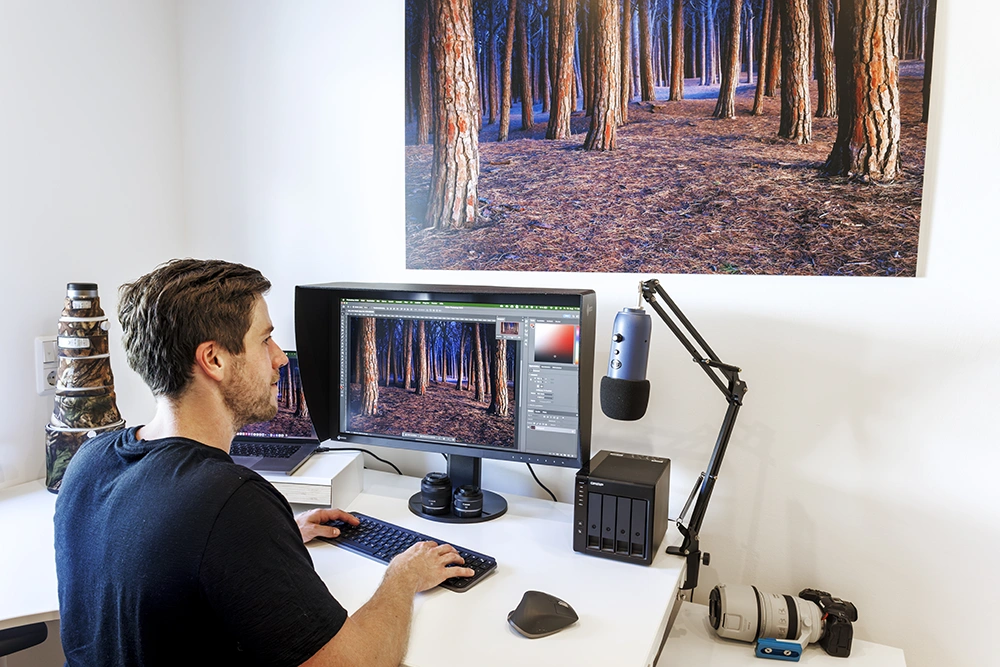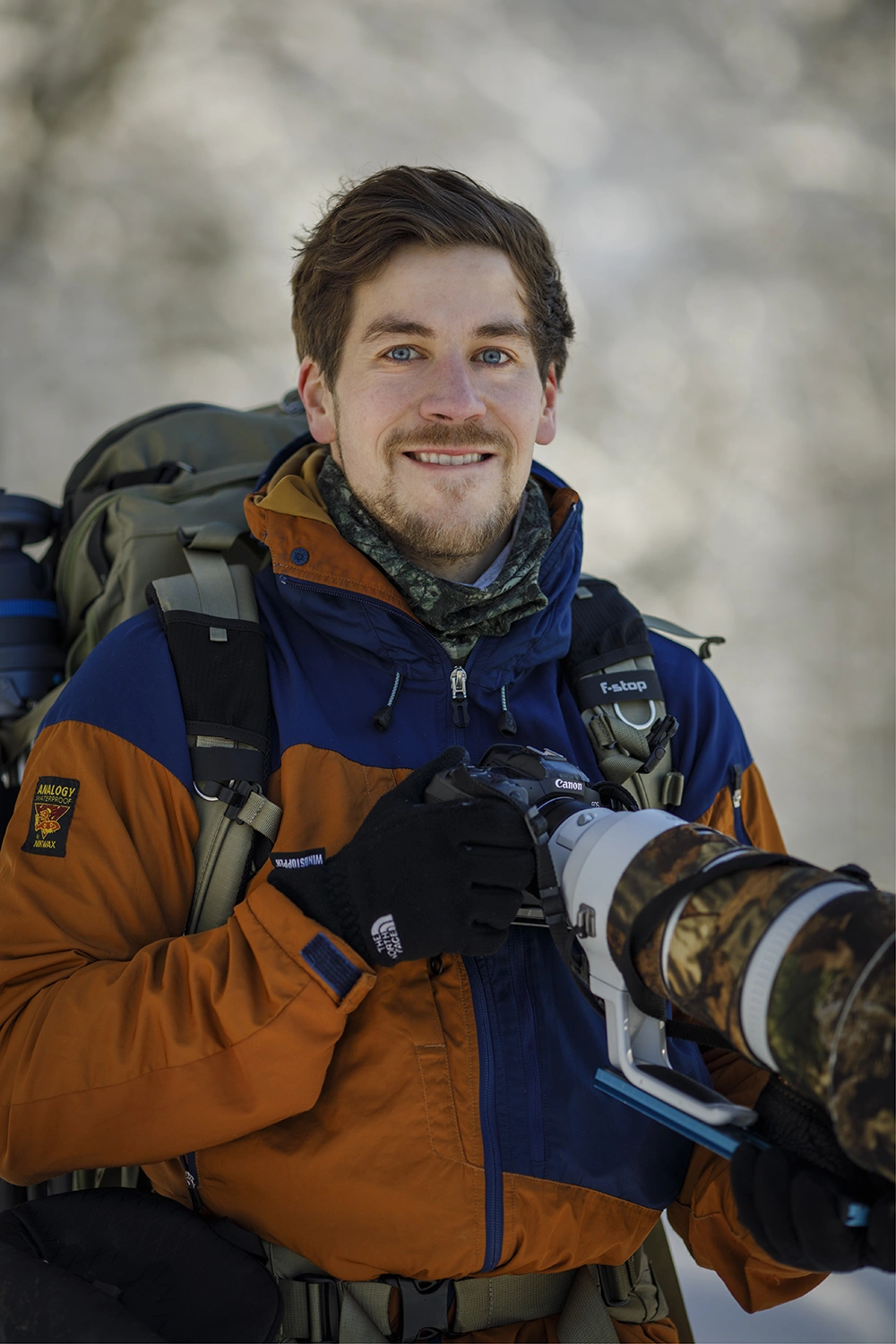Creative Work
Radomir Jakubowski - The Secrets of Success for Nature Photography
|
Radomir Jakubowski is one of Germany’s best-known and most successful nature photographers in photo competitions. He has now been able to tick another success off his bucket list: one of his pictures is currently hanging in the Natural History Museum in London. In this interview, he gives tips on how to be successful in competitions, how to take good animal photos, and reveals which monitor he uses to edit his pictures. |
|
Radomir, you take part in numerous competitions. Why do you do that?
There used to be a lot of ambition involved. Nowadays, success is no longer so important to me. But competitions have a good marketing effect. And that’s important if you’re a full-time nature photographer.
You’ve been a regular on the international competition scene for countless years. Do you have any tips on how to be successful in competitions?
First of all, you have to develop a sufficient distance from your pictures. As a rule, nobody knows how much you had to go through to get the picture. Nobody knows the circumstances and therefore nobody can take them into account. In competitions, none of the things that often make pictures special for the photographer count. The picture has to work on its own and without context. You have to let go of some of your favorite pictures.
Then it is also important how the jury awards the prizes. If it is an online jury in which everyone judges for themselves, more mainstream images have a better chance. A picture that receives a reasonably good rating from all jurors has a better chance of success than a picture that receives an extremely high rating from some jurors and a very low rating from others. What is more unusual, however, is that when there is a jury panel, polarizing pictures have a chance because a discourse takes place.

The Wildlife Photographer of the Year (WPY for short) is a competition that had been missing from your track record so far. That has just changed.
Yes, I was really pleased about that. I didn’t win in a category, but the competition works differently anyway: there is one winning image per category and some images that are “Highly Commended” (jury recommendations, editor’s note). With almost 50,000 photos submitted, this is a great success. And, of course, it’s great to be part of the exhibition at the Natural History Museum in London.
Your winning picture shows a rather tranquil forest scene. How was the picture taken?
The picture was awarded in the “Plants and Mushrooms” category* and shows a pine forest on the Tuscan coast. The proximity to the sea is also the reason for the special lighting mood that makes the picture so extraordinary. The background is dominated by cool light, while the foreground is flooded with warm light. I am particularly pleased with the award because my visual language is rather unusual for this competition.
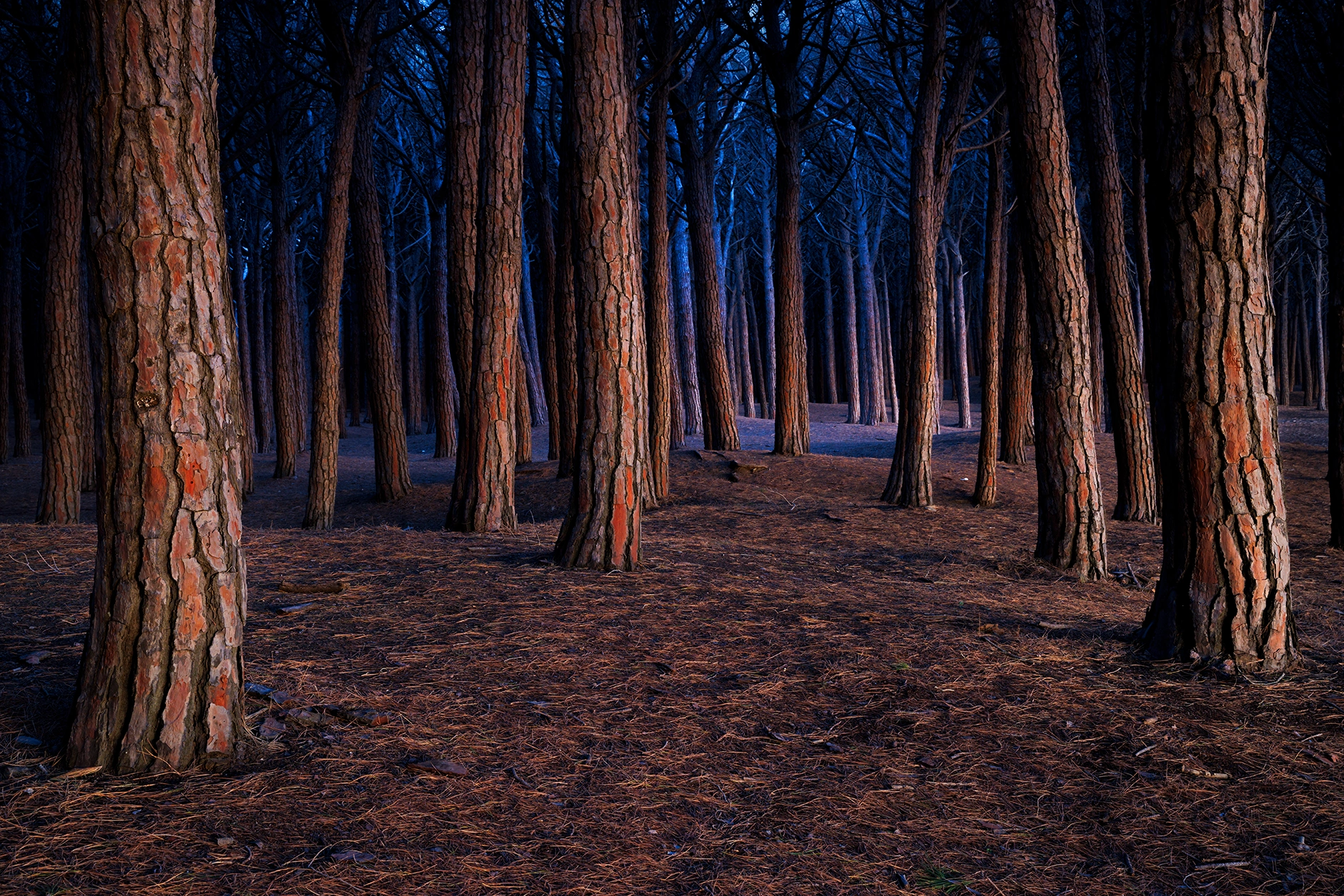 Winning picture
Winning picture
Jakubowski made it into the selection for the international Wildlife Photographer of the Year competition with this photograph. It shows a forest in Tuscany.
*Wildlife Photographer of the Year official website: https://www.nhm.ac.uk/wpy/gallery/2023-the-twilight-forest
How did you come up with that and how would you describe your style?
At WPY, documentary photos have the best chance of success. My pictures tend to be too abstract, too artistic. About my style: it’s not easy to say that about myself. I think my pictures are characterized by special light. I also like backlighting. I often take low angles and work with long focal lengths and an open aperture.

Now the picture from Tuscany almost marks the edge of your usual radius of action. How can you be successful as a wildlife photographer if you mainly work in Germany and neighboring countries? Doesn’t that lack “novelty”?
Quite the opposite. I used to travel a lot more internationally. But the longer I work as a nature photographer, the smaller my radius becomes. If you approach your projects and themes strategically and with professional standards, you simply have to come back often in order to achieve outstanding results. “Novelty" is always in the eye of the beholder. For photographers from Africa, a snowy owl is exotic, for us in Central Europe it’s a kangaroo. You have to get away from that.
During the pandemic, my regional focus was a real stroke of luck. I was able to carry on somehow despite the travel restrictions. At the time, chance came to my aid: my book, Naturfotografie vor der eigenen Haustür (Nature Photography on Your Own Doorstep), was published in February 2020 shortly before the first lockdown. It happened to be the right topic at the right time. But even now that all travel restrictions have been lifted, I still believe you don’t have to travel to the other side of the world to take impressive wildlife photos.
In your opinion, what is the secret to success for impressive animal pictures?
Proximity! Proximity and knowledge. To take good pictures, you have to get close enough to the animals. And to do that, you have to know how and where to find the animals, and how they behave. And then of course, as always in photography, you need special light.
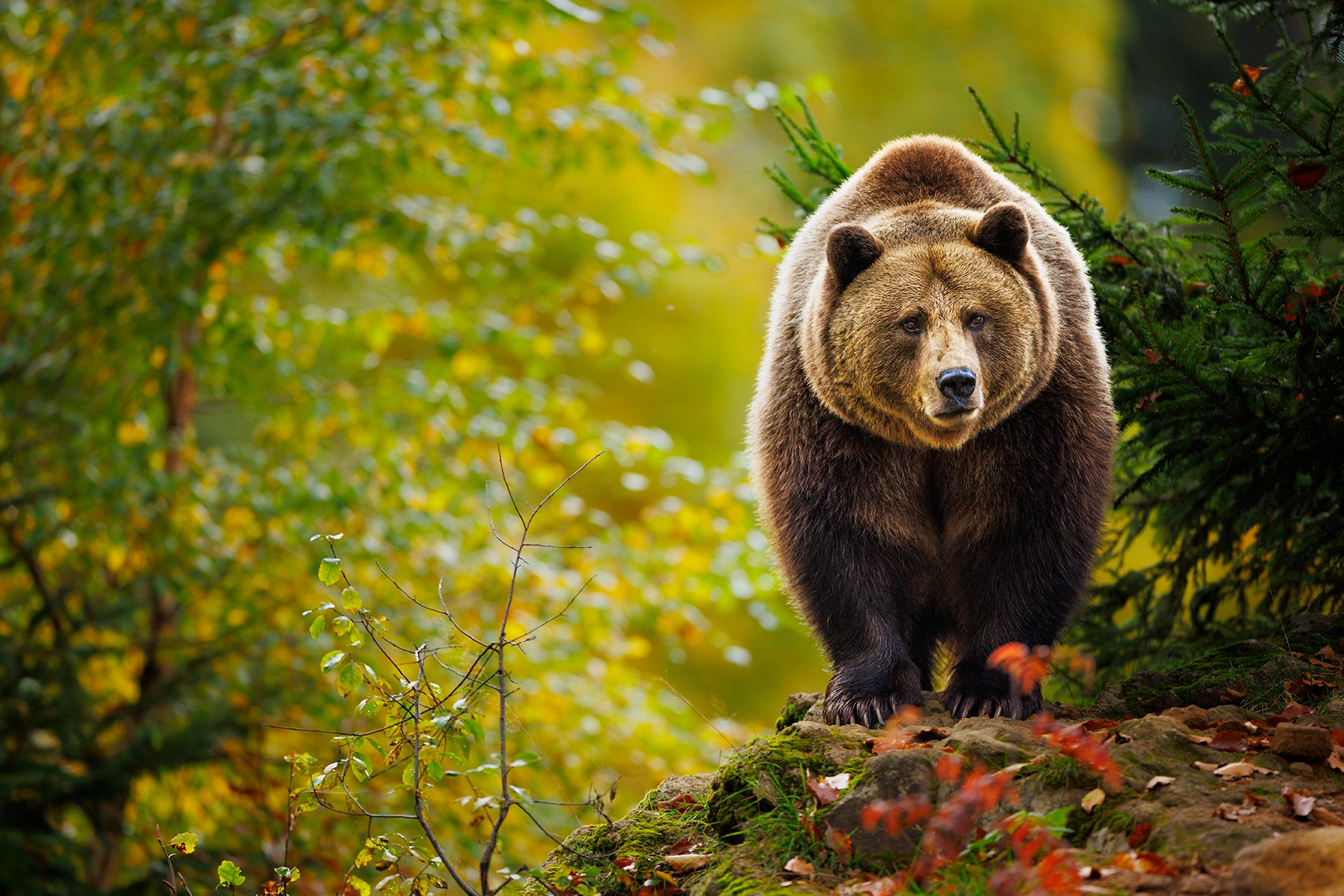 Bavarian brown bear ©:
Bavarian brown bear ©:
Jakubowski photographed this stately animal in the Bavarian Forest National Park. The picture was taken with a 400mm focal length. “This gives me a very flat angle and a perspective that looks almost close to the ground,” explains the photographer.
Let’s talk about your equipment: What has made your work easier in recent years?
Without a doubt: camera technology! It has made a huge leap forward again in the last few years. Current mirrorless cameras, like my Canon EOS R5, and modern lenses have dramatically reduced waste. Animal eye autofocus, for example, now enables images that were only possible a few years ago with enormous waste. And the weight also makes a huge difference, especially with long focal lengths. Nature photography is still often a battle of materials. So, it is much appreciated if you have to lug a few kilos less up the mountains.
The main reason for this is that lenses, such as the Canon RF 2.8/400, weighing less than three kilograms, can now be used handheld without any problems. The combination of lightning-fast autofocus, low weight, and stabilizers integrated into the lens and/or cameras means that you can now take crisp, blur-free pictures at shutter speeds that were considered completely unthinkable a few years ago. Personally, I also love the electronic viewfinder. For macro shots, it’s great to be able to zoom into the picture before you take it while looking through the viewfinder.
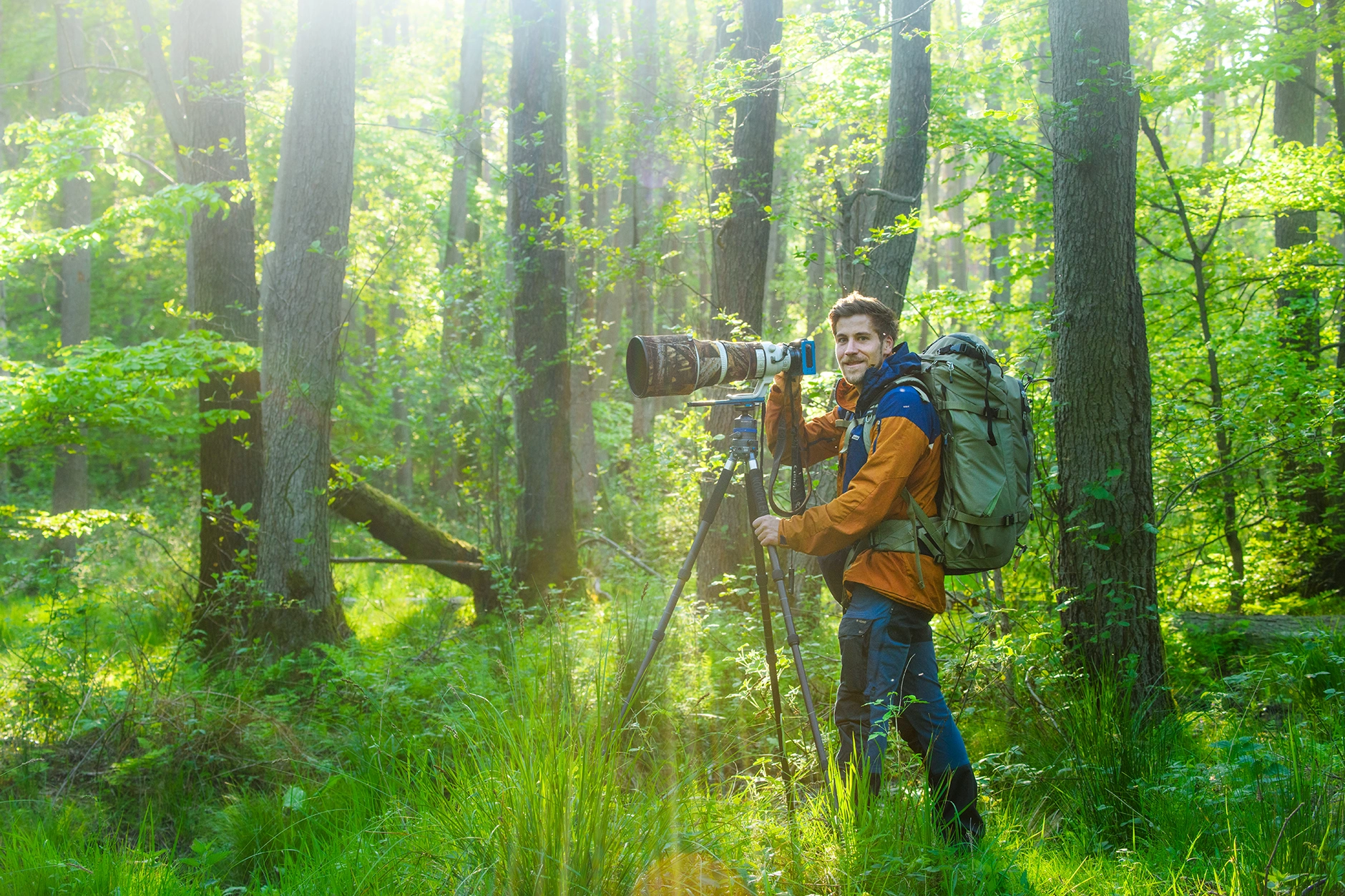 The man behind the camera
The man behind the camera
Even though the photographic equipment is becoming lighter and lighter, Radomir Jakubowski is often traveling with a heavy load - in addition to the camera - the basic equipment naturally includes lenses with long telephoto focal lengths, a tripod, and a backpack.
The material battle doesn’t end with the recording. After all, the images also need to be viewed and edited. What role does the hardware play in your image processing?
I change my computer hardware from time to time. Sometimes I use Windows, sometimes Apple. Basically, both systems do what they should, and the differences are small. My monitors are the linchpin of my digital darkroom. It’s the monitors that allow me to see my pictures. And I have to be able to rely one hundred percent on the fact that I get exactly the image file displayed on the monitor. For a few months now, I’ve been using the ColorEdge CG2700X from EIZO.
You’ve been an EIZO ColorEdge Ambassador since 2015, so transparency is a must.
Yes, that’s right. I was one of the first Ambassadors and I’m still proud to be one today. Collectively, I’ve been an EIZO user for 18 years. I always try to use the best, most suitable tool for my work. And that’s where you inevitably end up with EIZO.
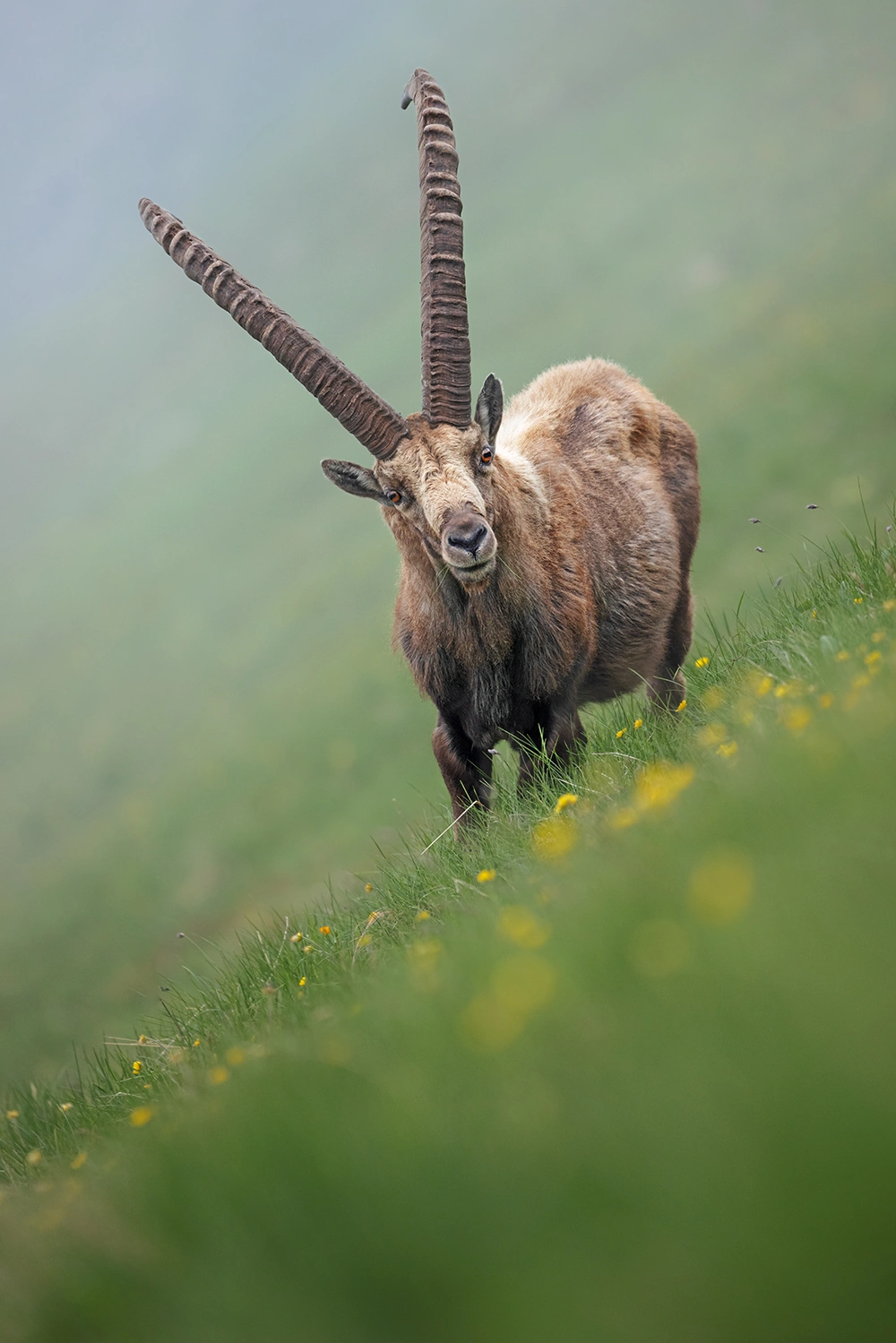
Photographer Radomir Jakubowski found an ibex here that came straight towards him - the result is a wonderful animal portrait.
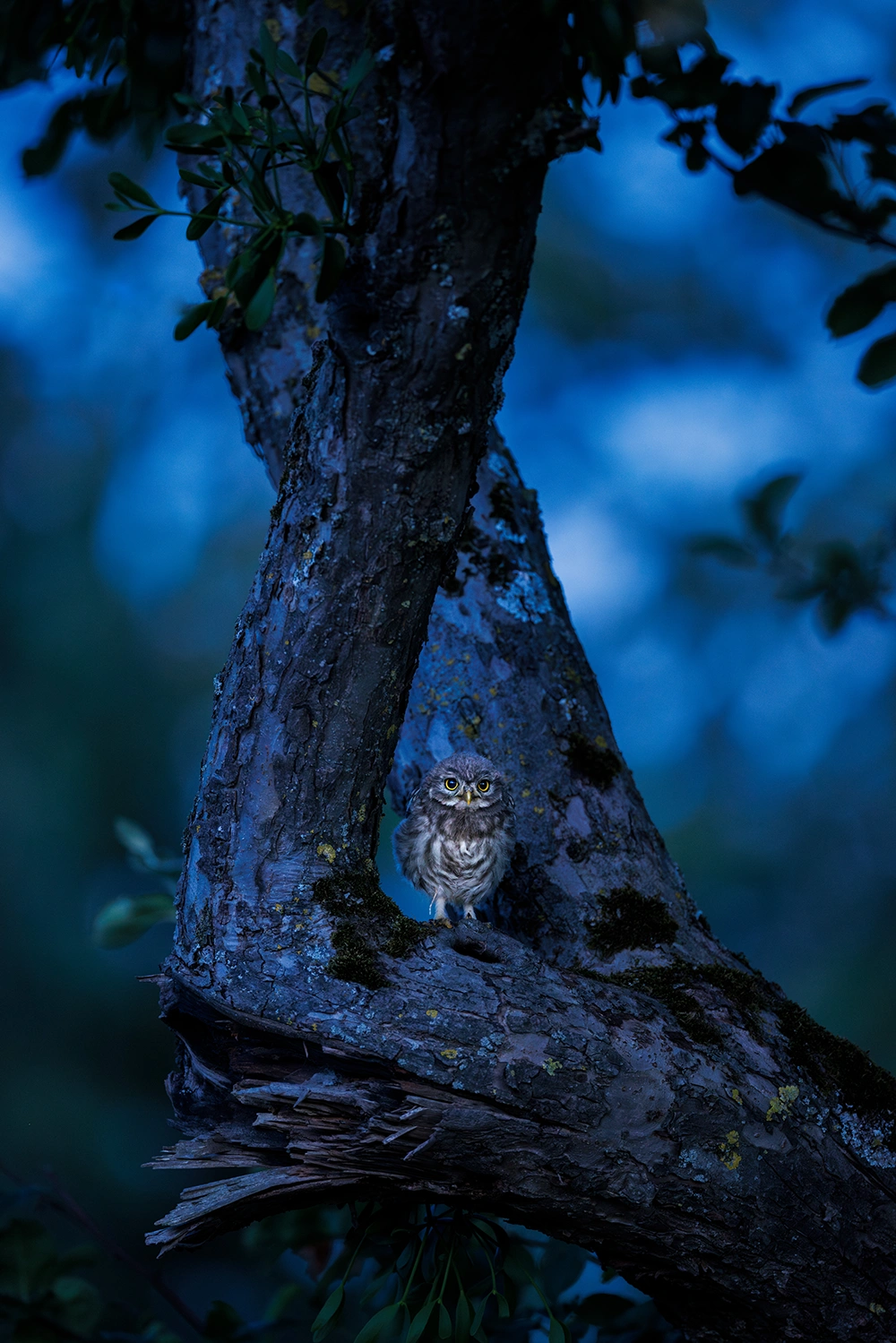
Post-processing is particularly important for shots like this one. Jakubowski checks the image on the EIZO monitor.
What do you think makes a good monitor for photographers?
As I said: first of all, precision. I simply have to be able to rely on the monitor to show me an absolutely precise image of the file. That may sound obvious, but it’s anything but. In my opinion, the monitor must have a homogeneous display. And in order to be able to use the color space of my cameras, the monitor must also be able to display a large range of color, such as Adobe RGB. The monitor must not invent any image errors that are not in the file. This often happens when you carry out a software calibration. The monitor becomes more precise, but there is a risk of mapping errors. This is why monitors for photographers should be hardware calibratable.
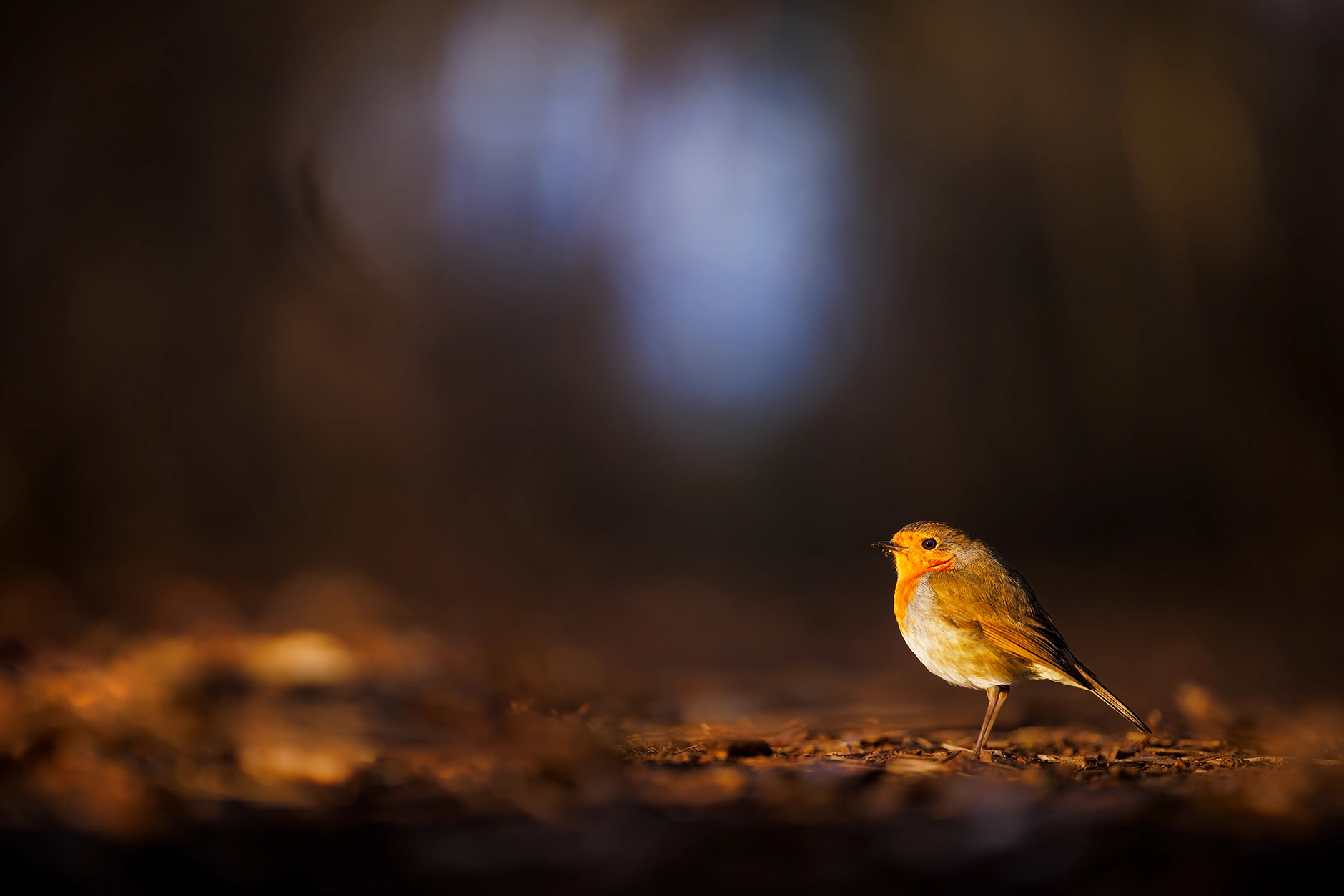
Why did you ultimately choose the EIZO ColorEdge CG2700X?
The CG2700X combines all the advantages of my previous monitors. So far, I’ve used the ColorEdge CG248-4K and the CS2740. One is a 24-inch CG monitor, so it belongs to the high-end series with a built-in calibration sensor; a feature that I really appreciate. The CS2740 is a 27-inch monitor from the CS series. I bought it primarily to ensure a precise image display for me and my workshop participants on site. The CG2700X combines the best of both models: 27-inch size, 4K resolution, and the built-in calibration sensor. Furthermore, the connections of the CG2700X are also ultra-practical: I simply connect my MacBook Pro to the monitor with a USB Type-C cable and all functions are connected. My MacBook is charged with up to 94 watts, I can use the USB hub, and the monitor even has a LAN connection, which my MacBook no longer has. This makes the whole thing super practical when working.
It looks like you’ll be staying loyal to EIZO for a while longer?
I’d love to, because, in my opinion, EIZO monitors are still the best on the market.
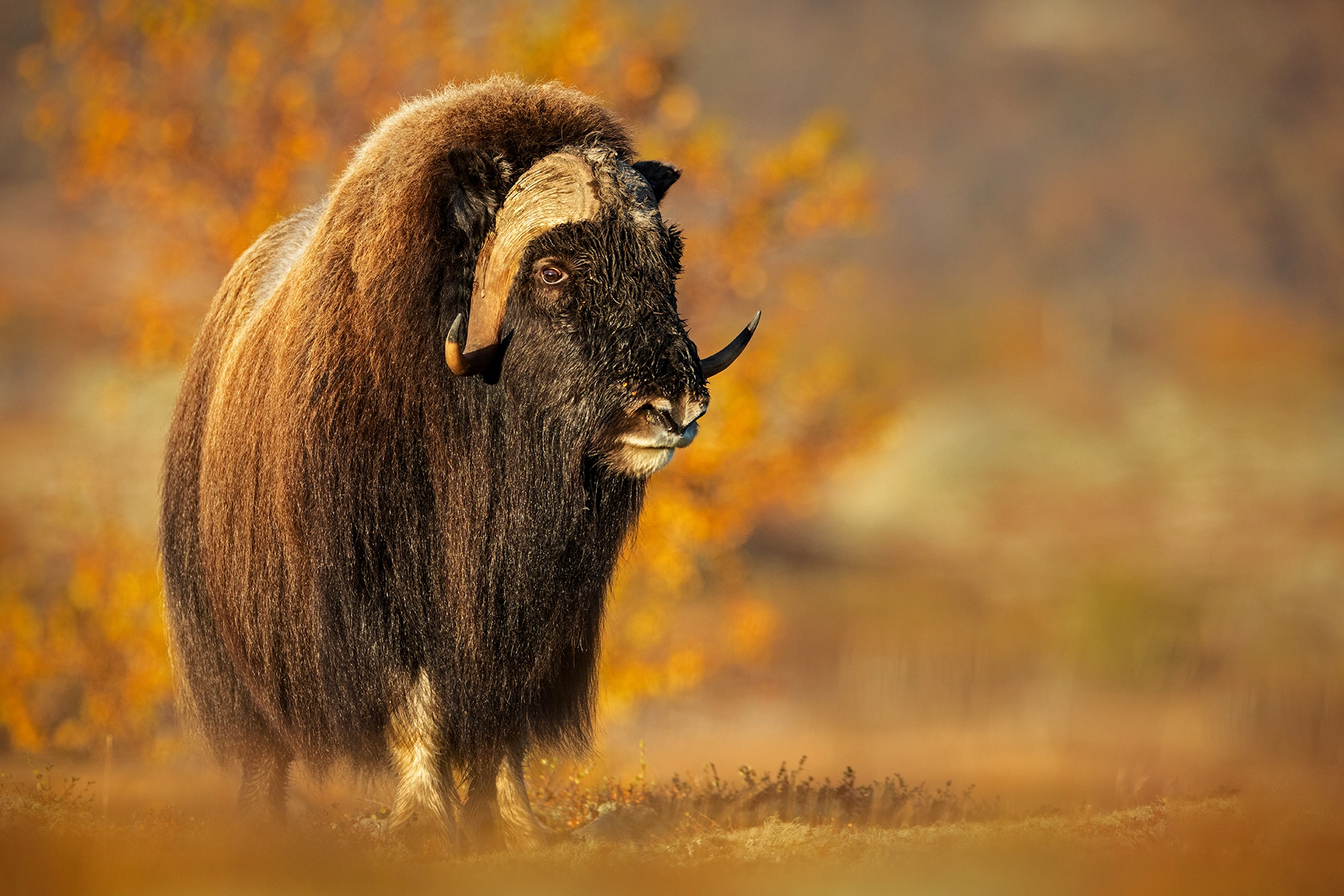
|
About Radomir Jakubowski
|
Nature photographer Radomir Jakubowski discovered his passion for flora and fauna as a child. Today, he is a successful author, workshop leader and, of course, photographer. His pictures have won prizes in countless international competitions. He also regularly publishes articles in specialist journals and is on the board of the GDT (Society for Nature Photography). |
Deployed Product
Radomir Jakubowski is a member of EIZO’s ColorEdge Ambassador Program, which showcases professional photographers, designers, filmmakers, and other creatives who are committed to inspiring and educating artists around the world of all levels.
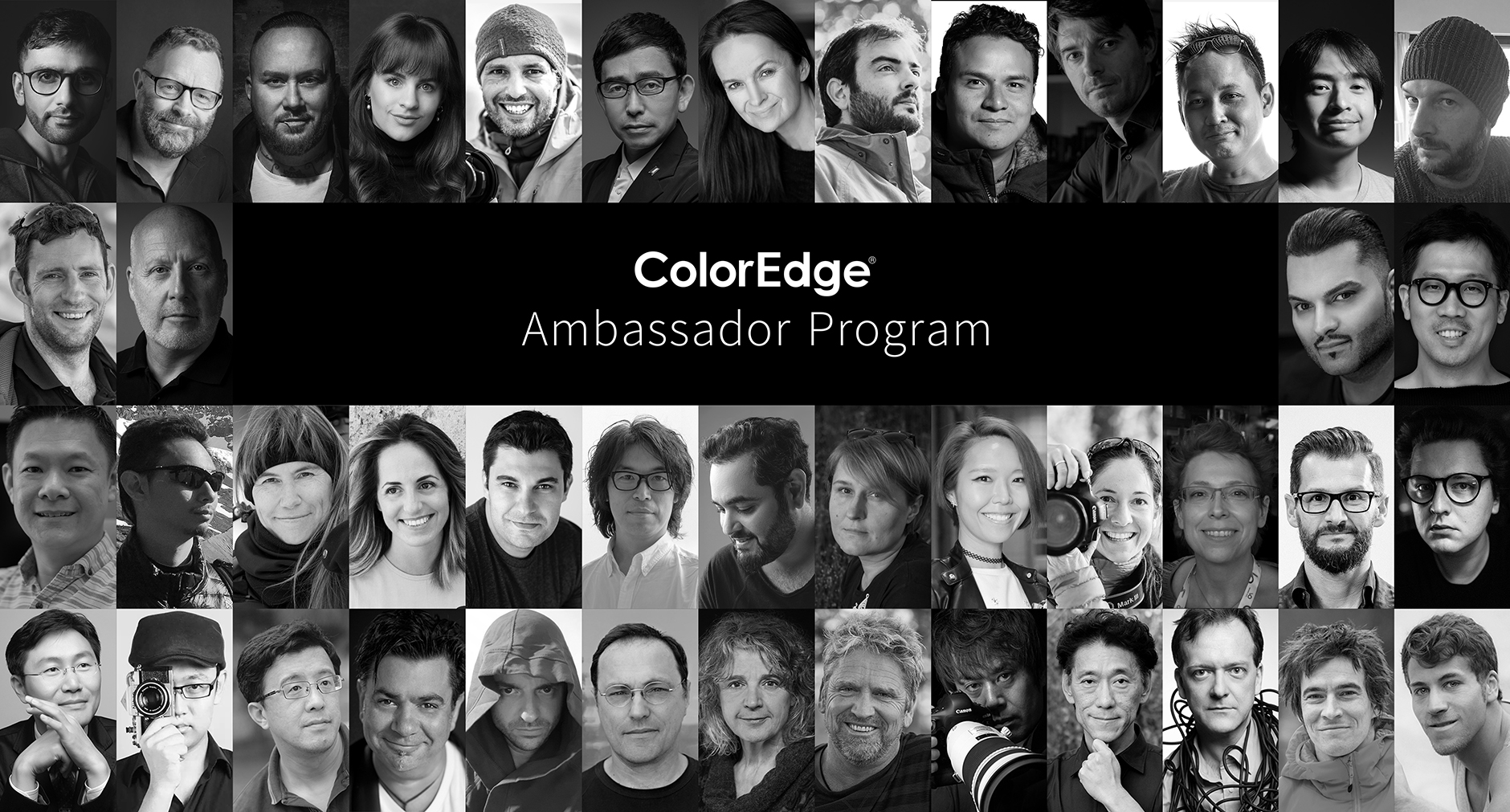
ColorEdge Ambassador Program Website

